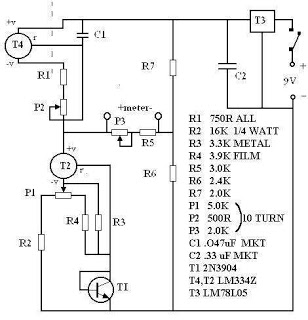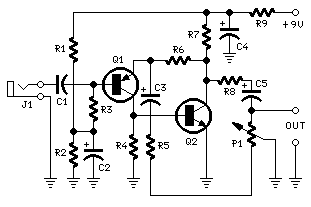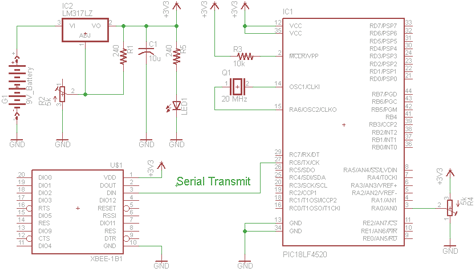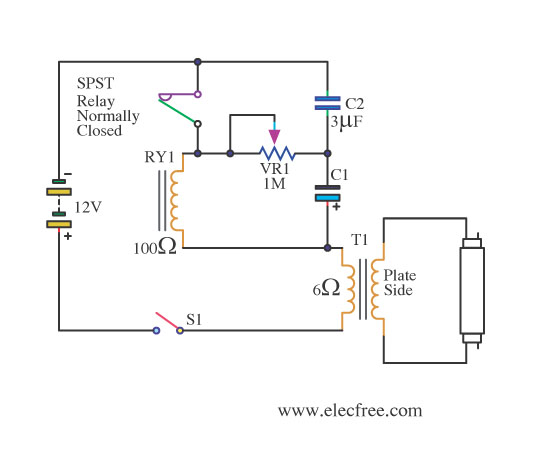
Oscilloscope Preamplifier Circuit

An oscilloscope front-end amplifier can be constructed using low-cost transistors and video amplifier integrated circuits (ICs). This preamplifier utilizes a FET input along with compensated attenuators, achieving an approximate bandwidth of 100 MHz, which is sufficient for most general-purpose oscilloscopes.
The design of an oscilloscope front-end amplifier is critical for ensuring accurate signal representation and measurement. The use of low-cost transistors and video amplifier ICs allows for a cost-effective solution without compromising performance. The FET (Field Effect Transistor) input stage is particularly advantageous due to its high input impedance, which minimizes loading effects on the signal source. This characteristic is essential for preserving the integrity of the input signal, especially in applications involving high-frequency signals.
Compensated attenuators are integrated into the design to manage the signal levels effectively, allowing for a dynamic range that can accommodate various input signal amplitudes. This feature is vital for general-purpose oscilloscopes, which often need to analyze signals with differing voltage levels without distortion.
The amplifier's bandwidth of approximately 100 MHz is a critical specification, as it determines the frequency range over which the amplifier can accurately process signals. This bandwidth is adequate for most general-purpose applications, enabling the oscilloscope to capture and display fast-changing waveforms, such as digital signals or high-frequency analog signals.
In summary, the combination of a FET input, compensated attenuators, and a bandwidth of 100 MHz makes this front-end amplifier design suitable for a wide range of oscilloscope applications, ensuring reliable performance in signal measurement and analysis. An oscilloscope front-rend amplifier can be built with low-cost transistor and video amp ICs. This preamp uses a FET input and compensated attenuators, and has approximately 100-MHz bandwidth, which is adequate for most general-purpose oscilloscopes.
The design of an oscilloscope front-end amplifier is critical for ensuring accurate signal representation and measurement. The use of low-cost transistors and video amplifier ICs allows for a cost-effective solution without compromising performance. The FET (Field Effect Transistor) input stage is particularly advantageous due to its high input impedance, which minimizes loading effects on the signal source. This characteristic is essential for preserving the integrity of the input signal, especially in applications involving high-frequency signals.
Compensated attenuators are integrated into the design to manage the signal levels effectively, allowing for a dynamic range that can accommodate various input signal amplitudes. This feature is vital for general-purpose oscilloscopes, which often need to analyze signals with differing voltage levels without distortion.
The amplifier's bandwidth of approximately 100 MHz is a critical specification, as it determines the frequency range over which the amplifier can accurately process signals. This bandwidth is adequate for most general-purpose applications, enabling the oscilloscope to capture and display fast-changing waveforms, such as digital signals or high-frequency analog signals.
In summary, the combination of a FET input, compensated attenuators, and a bandwidth of 100 MHz makes this front-end amplifier design suitable for a wide range of oscilloscope applications, ensuring reliable performance in signal measurement and analysis. An oscilloscope front-rend amplifier can be built with low-cost transistor and video amp ICs. This preamp uses a FET input and compensated attenuators, and has approximately 100-MHz bandwidth, which is adequate for most general-purpose oscilloscopes.





